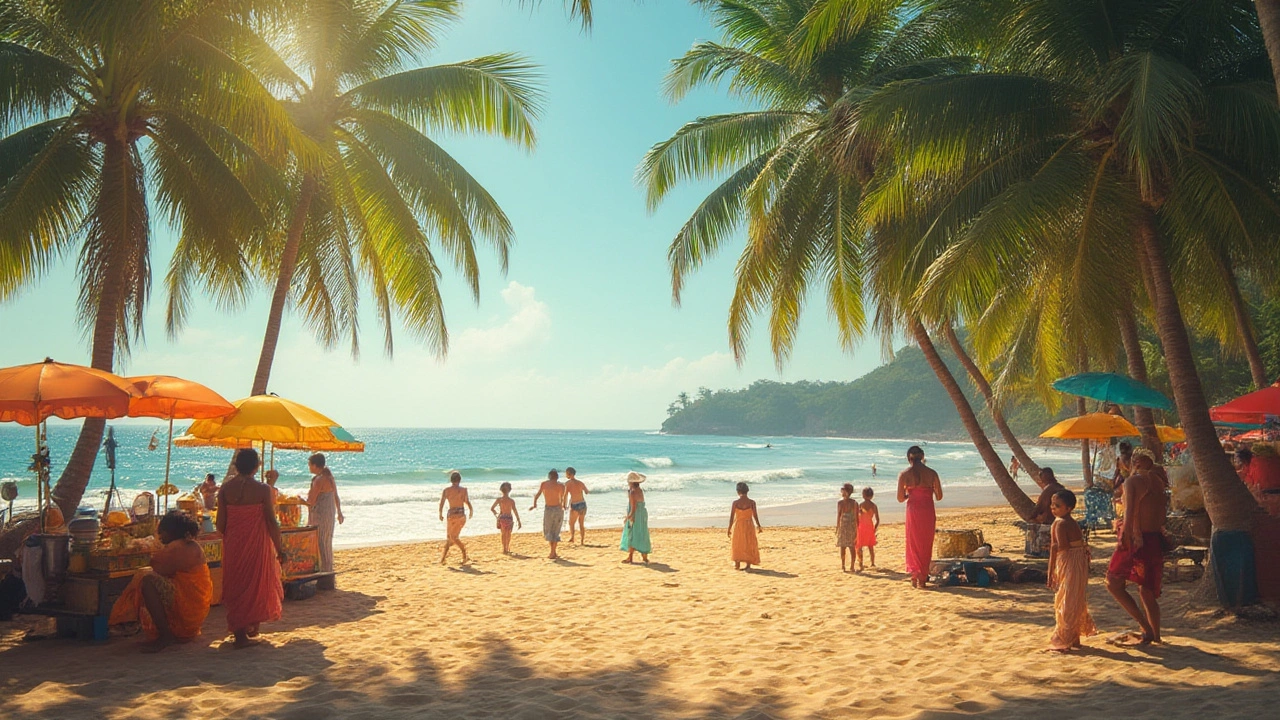SEARCH
Goa Weather – Your Quick Guide to Sun, Rain & Temperatures
Planning a Goa vacation and wondering what the weather will be like? You’re not alone. Goa’s climate can swing from scorching sun to sudden downpours, and the right timing can make or break your beach plans. Below you’ll get a clear picture of each season, the temperature range you’ll see, and what to pack so you stay comfortable no matter when you travel.
Seasonal Overview
Goa has three main weather periods: winter (November‑February), summer (March‑May) and monsoon (June‑October). Winter brings pleasant daytime highs of 28‑30°C (82‑86°F) and cooler evenings around 20°C (68°F). This is the most popular time for tourists because the sea stays warm enough for swimming while the humidity drops.
Summer climbs quickly, with temperatures hitting 33‑36°C (91‑97°F). The heat is intense but the sea breeze offers some relief, especially in the evenings. If you love sunbathing and don’t mind a bit of sweat, this is a good low‑price window – hotels often drop rates after the peak winter season.
Monsoon season arrives in early June and lasts until the end of October. Daily rain showers can be heavy, averaging 250‑300 mm per month. Temperatures stay in the high 20s°C (mid‑80s°F). The landscape turns lush and waterfalls are at their best, but beach time is limited. If you’re into off‑beat experiences, the monsoon offers dramatic sunsets and fewer crowds.
Practical Tips for Travelers
When you pack for Goa, think layers. A light cotton shirt, shorts, and sandals work for summer and winter days. Add a light sweater or shawl for cooler evenings in November and December. During monsoon, bring a waterproof jacket, quick‑dry pants, and sturdy sandals that handle wet roads.
Sun protection is a must year‑round. Pack sunscreen SPF 30 or higher, a wide‑brim hat, and sunglasses. Even on cloudy monsoon days, UV rays can be strong.
Plan your activities around the weather. Early mornings (6‑9 am) are best for sunrise walks or yoga on the beach, especially in summer when the heat builds later. In monsoon, schedule indoor attractions like spice farms, museums, or cooking classes in the afternoon when rain is most likely.
Transport can be affected by heavy rain. If you travel during monsoon, allow extra time for road trips and consider hiring a local driver who knows the safest routes. Keep an eye on local weather apps for sudden squalls.
Finally, stay flexible. Goa’s charm lies in its ability to surprise – a sudden rainstorm can turn a quiet beach into a vibrant local gathering with music and food stalls. Embrace the changes and you’ll get the most authentic experience.

Best Time to Visit Goa: Weather, Festivals, Travel Tips & When to Go
Curious about the best time to go to Goa? Find out when to visit for perfect weather, fun festivals, quiet escapes, or buzzing nightlife. Plan your trip right!
Continue reading